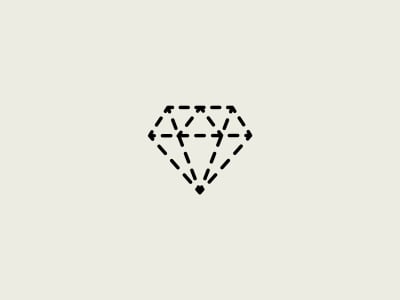Color Grading “Colorless” Diamonds
Introduction
In the diamond industry, rarity equates to value, particularly with color. Generally, colorless diamonds are the most valuable due to their lack of color. These are the diamonds most often used in jewelry and they will have an alphabetically assigned color grade that indicates the subtle degree of yellow that may be discerned. The letters move in a scale from no color at all to very definite shades of yellow. Conversely, for colored diamonds, prices rise with color intensity, with rare hues like saturated pinks, blues, and greens being especially valuable. Even slight color variations will greatly affect what a colored diamond will cost.
If this sounds a little confusing, perhaps a paint analogy will help you understand why "colorless" and "colored" diamonds are graded in such very different ways. Anyone who has gone to a hardware store thinking, "I am just going to paint that room white" is in for a surprise. There are lots of subtle variations that are all called 'white'. For instance, "ivory", "cream", "eggshell" , and so the list will go on. However, if you decided to paint the room blue, you fully expect to find a whole range of blues at the store. There will be dark and light blues, royal blues, Prussian blues, teal blue which has a touch of green, bluish violet; in fact in addition to all those choices there will probably be a helpful sales person there to mix a shade of blue that you show them.
Describing Color.
Describing color is a very difficult due to the differing perceptions we each have and the incredible subtleties that the human eye can perceive. This means that not only are systems describing the color of a diamond are hugely important, but they need to be based on a recognized standard for them to work for everyone in the industry, including the customer across the counter in a jewelry store.
These days, with the easy affordability and availability of lab-grown diamonds, establishing whether a diamond is naturally formed or man-made is a critical first step in any diamond report.
